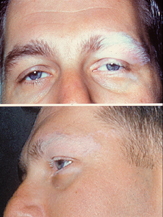
Photo from wikipedia
PURPOSE To compare the utility of the Chinese diagnostic criteria for Vogt-Koyanagi-Harada (VKH) disease (CDCV), the revised diagnostic criteria (RDC) and the classification criteria by SUN (SUN-C). METHODS Two groups… Click to show full abstract
PURPOSE To compare the utility of the Chinese diagnostic criteria for Vogt-Koyanagi-Harada (VKH) disease (CDCV), the revised diagnostic criteria (RDC) and the classification criteria by SUN (SUN-C). METHODS Two groups of patients (VKH group and non-VKH group) were assessed in this retrospective case-control study. Sensitivity, specificity and area under receiver operating characteristic curve (AUC) were evaluated among these criteria. RESULTS 258 patients were included after propensity score matching. The sensitivities were 92.2% in CDCV, 66.7% in RDC, and 54.3% in SUN-C. In different disease stages (early and late), similar sensitivity results were observed. The specificities were 96.1% in CDCV, 97.7% in RDC, and 99.2% in SUN-C. The AUCs were 0.942 in CDCV, 0.822 in RDC and 0.767 in SUN-C. CONCLUSION A higher sensitivity value and larger AUC in CDCV were found. CDCV are highly useful in the diagnosis and classification of VKH disease in Chinese patients.
Journal Title: Ocular immunology and inflammation
Year Published: 2022
Link to full text (if available)
Share on Social Media: Sign Up to like & get
recommendations!